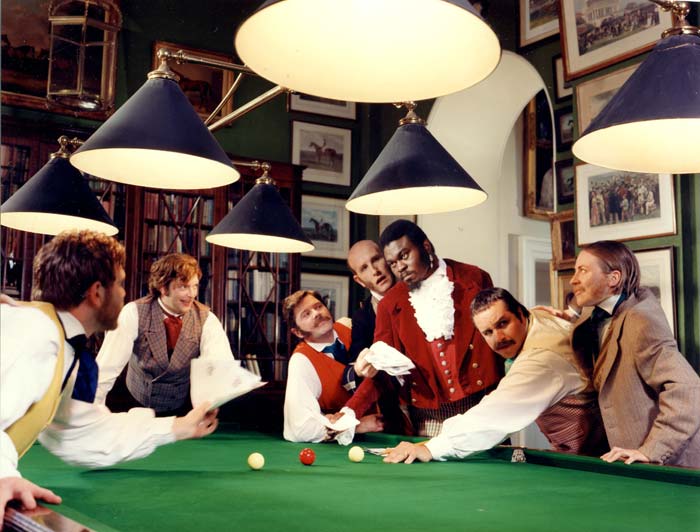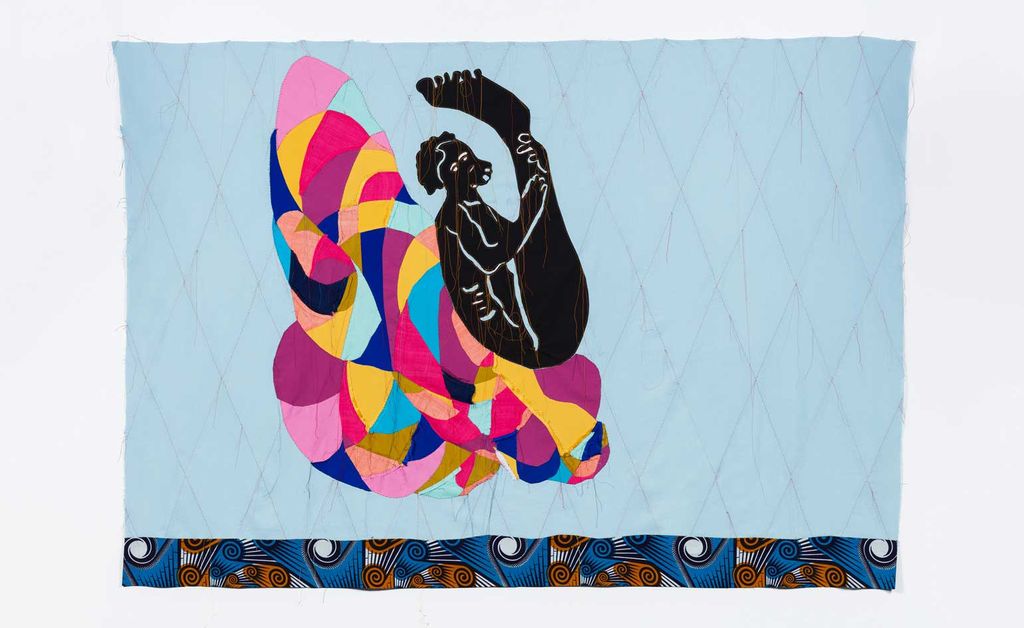Remapping the World Excerpted from Thorsten Sadowsky, "Remapping the World," in Yinka Shonibare CBE: End of Empire (Munich: Hirmer Verlag GmbH, 2021)

Diary of a Victorian Dandy: 17:00 hours, 1998.
Amiable Protest and Africouture
"In a way, when people see an artist of African origin, they think: oh, he is here to protest. Yes, okay. I am here to protest, but I am going to do it like a gentleman. It is going to look very nice. You are not even going to realize that I am protesting, you are going to invite me to your museum because the work is nice, and then when I am inside, it is too late. But I have to do it nicely—because if I am already coming to you with a knife, you're going to send me away."
Yinka Shonibare CBE
Yinka Shonibare CBE was born in London and raised in Nigeria. He studied art at Goldsmiths College in London and today is one of the most widely known and successful Afro-British artists. In 2019, he was given the title Commander of the Most Excellent Order of the British Empire and has since added the acronym CBE to his official name. Well-versed in postcolonial cultural theory, Shonibare sees himself as a "postcolonial hybrid" who practices the genteel restraint of a British gentleman and has gained access to the most prestigious museums of the Western world with his exquisitely tailored parodies of the lifestyle of the British upper classes. Shonibare's amiable and stylistically consummate subversion consists in his signature use of double-sided, colourfully printed cotton fabrics to invade the art and museum worlds. Seen as typically African, the fabrics are a telling example of global colonial entanglements; known as Dutch wax, the fabrics were originally created in an attempt to imitate the patterns of the elaborately handcrafted Indonesian batik fabrics and produce them on an industrial scale in a textile printing process.
Art Term: Postcolonial Art
Postcolonial art refers to art produced in response to the aftermath of colonial rule, frequently addressing issues of national and cultural identity, race and ethnicity. Refer to the Tate's online glossary for more.
However, the new mass product failed to be successful in the Dutch colony and, in the nineteenth century, found its way to West Africa, where a market for the printed cotton fabrics developed. In the second half of the nineteenth century, the fabrics came to be designed and produced mainly in the Netherlands and England, while Africa became the largest market for them. Today, much of the production takes place in Africa and China; only the most expensive fabrics are made in Holland. The Dutch town of Helmond near Eindhoven is where Vlisco's exquisite patterns are created, which are then used to tailor "Africouture" clothing in West Africa. And this is also where Shonibare obtains the fabrics for his postcolonial role plays and ironic deconstructions of Victorian traditions and customs.

The Victorian Philanthropist's Parlour, 1996–1997.
The hybrid history of the wax prints and their multifarious symbolic appropriation as an expression of supposed authenticity, fashionable individuality and cultural belonging reveal the ambivalent and asymmetric relationship between colonial power and colonized, which persists to the present day. Shonibare's subversive strategy, meanwhile, consists in harnessing the colonial past and postcolonial present of his industrially manufactured material to create works which visually seduce the viewer, while at the same time revealing themselves as self-reflective constructs. His work relies on theatricality and employs visual alienating effects which comment on and, in doing so, subvert the beautiful or historical illusion. Similar to the concept of metafiction used in postmodern literary theory, he seeks to critically examine the relationship of art and life by means of parody? When dressing headless figures in Victorian fashion, bedecking interiors with pseudo-African fabrics or staging himself in a period series as an admired black dandy of the Victorian Empire, he always occupies a dual position which, incapable of being assimilated or exoticized, instead explores the third space where cultures meet and mix. The objective of Shonibare's playful visual grammar is to show hybridity, while at the same time consistently frustrating any desire for authenticity in the sense of a longing for immediacy, originality, genuineness and purity.

Scramble for Africa, 2003.
England's rise to colonial world power from the eighteenth century on serves as the preferred historical backdrop for his installations. For his early work The Victorian Philanthropist's Parlour (1996–1997) Shonibare already recreated a Victorian drawing room with chair, chaise longue, tables, carpets, fireplace and mirror. The persuasive power of a Victorian period room in this conceptual work is already countered by its set-like appearance, but even more effective are the wax prints with which the artist upholstered the walls and all the furniture and which are printed with colourful floral patterns and images of African footballers. This anachronism serves both to blur the boundary between fiction and historiography and to visualize British colonial rule and its consequences. In this ostensible stage set of British domestic life and culture, Shonibare enacts the drama of postcolonialism.
The by now iconic photo series Diary of a Victorian Dandy, which in 1998 was placarded in numerous stations of the London Underground, featured Shonibare himself in the Victorian interior, appearing as a Victorian-African dandy whose daily routine is depicted in five tableaux vivants. Each time, the Black artist is the centre of attention and the composition; all admiring eyes of his white servants, friends and guests are on him when he is awakened in the morning, discusses business matters in the library and subsequently plays billiards. The evening is spent in the company of beautiful women and with the accompaniment of chamber music, with the final picture showing late-night debauchery involving both sexes. Shonibare presents impossible situations by drawing on the conversation pieces of William Hogarth and inverting the hierarchy of skin colour, so that the racist regime of the gaze underlying this type of genre painting is made obvious. Not interested in Hogarth's moralism, he instead presents and celebrates sexual excess, lavish luxury and the wilful and anti-bourgeois decadence of the dandy. Shonibare's relationship to the Victorian era is ambivalent; on the one hand, he is personally fascinated with Victorian style, refined luxury and the exquisite taste of the British aristocracy, but on the other, he emphasizes the inhuman flipside of the Victorian era: "Of course I realized, as an African, that Victorian values for me, were very draconian… The Victorians colonized Afrika. Basically, the Victorians made Africans work to produce a great empire. So Victorian values, to me, were values of repression, values of making me feel inferior."
With Scramble for Africa (2003), Shonibare created a particularly impressive tableau illustrating the colonization of the African continent and the imperial cupidity of the European powers. This expansive installation references the Congo Conference which took place in Berlin in 1884–85 and served as the basis for the colonial partitioning of Africa. A contemporary map of Africa showing the then current state of European occupation is embedded in the middle of the oblong conference table. Seated at it are fourteen headless figures clad in Dutch wax who represent the states participating in the conference and whose "scramble" augurs the so-called race for Africa. By the turn of the century, the participating colonial powers had already divided ninety percent of the territory of Africa among themselves.


